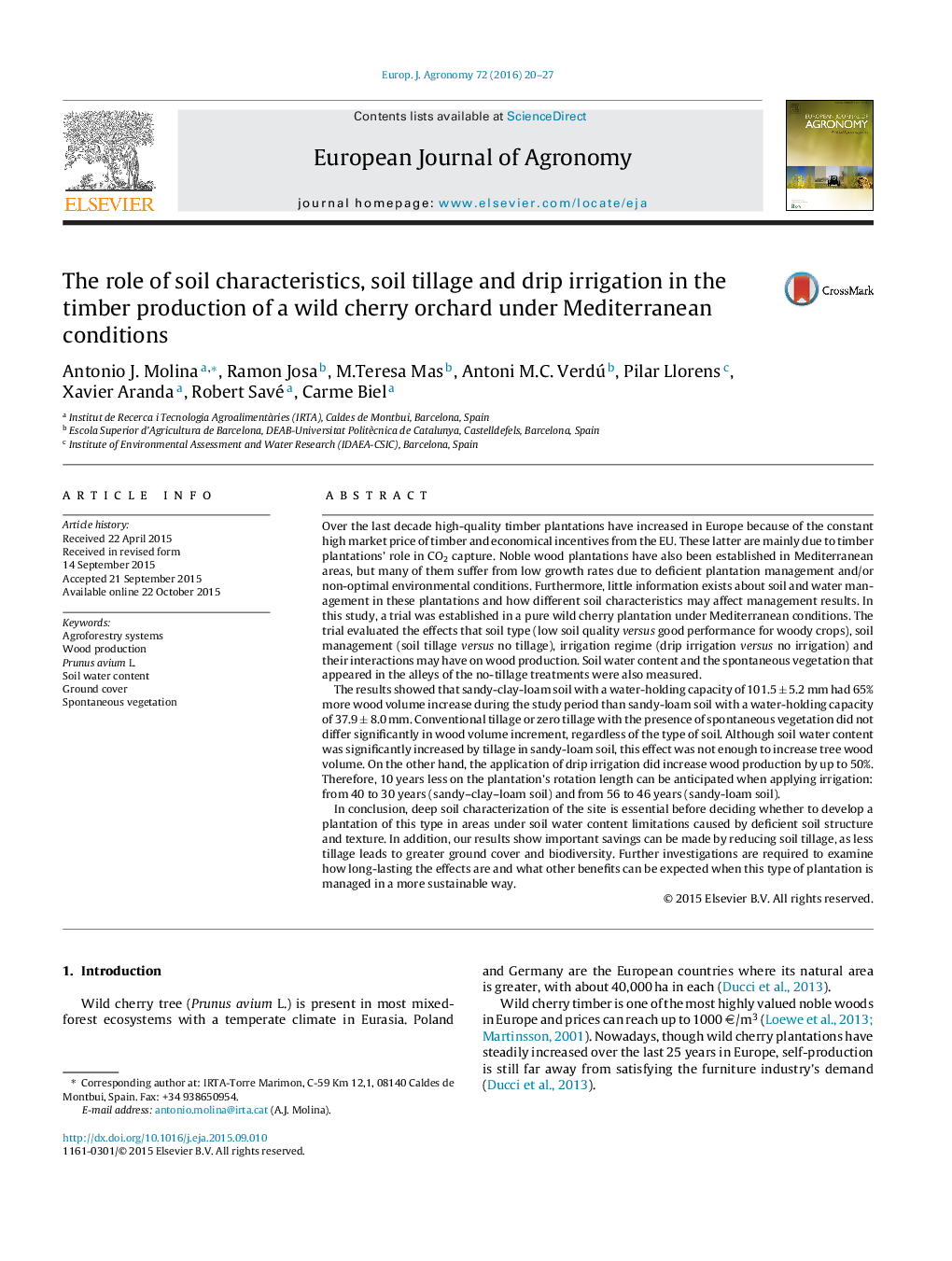| کد مقاله | کد نشریه | سال انتشار | مقاله انگلیسی | نسخه تمام متن |
|---|---|---|---|---|
| 4508707 | 1624453 | 2016 | 8 صفحه PDF | دانلود رایگان |
• The effects of soil type, drip irrigation and soil tillage on wild cherry timber production were evaluated; soil water content and spontaneous vegetation were complementary monitored.
• Soils characterized by sandy-loam texture and low water retention capacity were showed to be unsuitable for this type of plantation.
• Soil tillage did not show a significant effect on timber production.
• A reduction of 10 years in the rotation length is expected as a consequence of drip irrigation.
• Further investigations are required to test the temporal persistency of the studied effects and other expected benefits when this plantation is managed in a more sustainable way.
Over the last decade high-quality timber plantations have increased in Europe because of the constant high market price of timber and economical incentives from the EU. These latter are mainly due to timber plantations’ role in CO2 capture. Noble wood plantations have also been established in Mediterranean areas, but many of them suffer from low growth rates due to deficient plantation management and/or non-optimal environmental conditions. Furthermore, little information exists about soil and water management in these plantations and how different soil characteristics may affect management results. In this study, a trial was established in a pure wild cherry plantation under Mediterranean conditions. The trial evaluated the effects that soil type (low soil quality versus good performance for woody crops), soil management (soil tillage versus no tillage), irrigation regime (drip irrigation versus no irrigation) and their interactions may have on wood production. Soil water content and the spontaneous vegetation that appeared in the alleys of the no-tillage treatments were also measured.The results showed that sandy-clay-loam soil with a water-holding capacity of 101.5 ± 5.2 mm had 65% more wood volume increase during the study period than sandy-loam soil with a water-holding capacity of 37.9 ± 8.0 mm. Conventional tillage or zero tillage with the presence of spontaneous vegetation did not differ significantly in wood volume increment, regardless of the type of soil. Although soil water content was significantly increased by tillage in sandy-loam soil, this effect was not enough to increase tree wood volume. On the other hand, the application of drip irrigation did increase wood production by up to 50%. Therefore, 10 years less on the plantation's rotation length can be anticipated when applying irrigation: from 40 to 30 years (sandy–clay–loam soil) and from 56 to 46 years (sandy-loam soil).In conclusion, deep soil characterization of the site is essential before deciding whether to develop a plantation of this type in areas under soil water content limitations caused by deficient soil structure and texture. In addition, our results show important savings can be made by reducing soil tillage, as less tillage leads to greater ground cover and biodiversity. Further investigations are required to examine how long-lasting the effects are and what other benefits can be expected when this type of plantation is managed in a more sustainable way.
Journal: European Journal of Agronomy - Volume 72, January 2016, Pages 20–27
